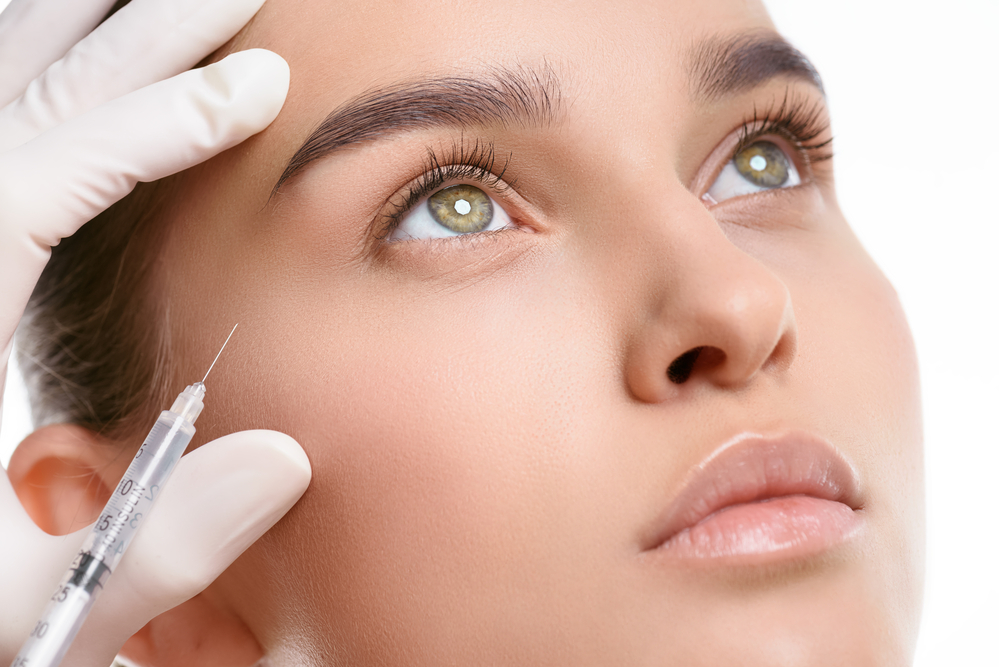
Botox and Dysport are the two most commonly known neurotoxins used in medspas and clinics in the United States for lessening the appearance of fine lines and wrinkles. Wrinkle injections are more straightforward than dermal fillers; however, it can be challenging to understand the differences and benefits over the other entirely.
Our wrinkle experts best advice for knowing which brand of injection is right for you? Always schedule a consultation with an experienced provider first so they can make a recommendation based on your facial lines, budget, and treatment goals.
Which Injection is Best For Your Skin Concerns?
It never hurts to be prepared before a consultation appointment. In this article, we’ll break down the differences between Botox, Dysport, and dermal fillers to help you have a better understanding of how the different products can be used for anti-aging treatments.
The most important question to ask during a consultation is which injection is best for me and my wrinkles, and not which is best in general.
How Botox and Dysport Are Similar
Both Botox and Dysport effectively treat fine lines and wrinkles by relaxing muscle tissue to the point where they prevent the muscle from contracting, creating a wrinkled appearance. When either product is injected into a targeted muscle area, the relaxation of the muscles reduces the appearance of wrinkles in the area.
Both Botox and Dysport will give you a temporary result, with regular treatment sessions approximately every 3-6 months.
Major Differences To Consider
The main differences between these two products are broken down into varying formulas. Both work in the same way, by blocking nerve signals to the muscles, with the main differences being:
Botox
The Botox formula is more concentrated than Dysport, making it more effective in treating larger areas or areas with thicker muscles. Although Botox is more commonly used than Dysport, each product is equally effective when used on wrinkles between the eyebrows. The number of treatments needed to achieve results will depend on the treated area and the patient’s needs. Botox typically takes three to five days to see results, and effects can last up to six months.
The advantage of using Botox is that it’s minimally invasive and treats various areas on the face. It also provides long-lasting results.
The downside of Botox is that there is a small population that shows no response to the treatment. These patients may benefit from Dysport injections.
Dysport
Dysport works the same way as Botox injections. A certain number of Dysport units are injected into the treatment area between the eyebrows, relaxing the underlying muscles that move and cause wrinkles. It’s FDA-approved to treat glabellar lines or vertical lines between the eyebrows. The number of treatments needed will depend on a patient’s individual needs, and there is no recovery time. Effects will last up to six months.
The advantage of using Dysport is that effects show up more quickly than the effects of Botox, and there are typically no associated side effects. The downside of Dysport is that some patients don’t react to this cosmetic treatment. They may have better results with Botox.
Other Injections to Consider
Juvederm
Juvéderm is a versatile filler that accomplishes a variety of rejuvenating tasks. Juvéderm’s formula employs specialized cross-linking of molecules to create a filler gel that lasts. We inject the Juvéderm to achieve subtle reinvigoration of the skin. Juvéderm may be used to augment the cheeks and mouth, reducing parentheses (laugh lines) and lip lines. It is also an option for subtle lip enhancement.
Juvederm Voluma
We also offer Juvéderm Voluma, a specially formulated filler designed to boost volume in the cheeks. In the same way that you lose volume in the lower half of the face, the cheeks tend to lose some of their roundness over time. You don’t have to sit back and watch your facial structure change – for many, Juvéderm Voluma can help. Like standard Juvéderm, Voluma contains hyaluronan. But its formula is designed to provide a subtle, lasting cheek lift. Treatment results may remain in place for up to two years.
Restylane
Restylane can present patients with a long-lasting option for laugh lines, frown lines, and other areas of facial volume loss.
Restylane offers several variations on its formula to address specific wrinkles and fine lines:
- Restylane Silk. A refined and smooth product that allows for precise, subtle enhancement. Restylane Silk is the first FDA-approved dermal filler to treat lips and fine lines around the mouth.
- Restylane Lyft. Restylane Lyft is the most robust filler option in the Restylane family. It is FDA-approved to enhance the middle of the face, cheeks, and nasolabial folds.
- Restylane Refyne. Restylane Refyne is intended to treat moderate to severe facial wrinkles or folds and provides more flexible support.
- Restylane Defyne. Restylane Defyne is heartier and firmer, making it ideal for the treatment of deep facial lines.
Which Injectable Is Right For You?
Botox and Dysport are so similar that they’re often seen as parallel options in eliminating fine lines and wrinkles. The main key factor when people are deciding between Dysport vs. Botox is the cost. The cost of Dysport is approximately ⅓ of the cost of Botox; However, Dysport is also ⅓ the strength of Botox. This often means that a patient will need approximately three times as many units of Dysport to achieve the same results as you would with one unit of Botox, bringing the two treatment costs to be about the same in the end.
Schedule a consultation today if you’re ready to learn more about Botox, Dysport, and dermal fillers we offer at Laser Aesthetic Center.
